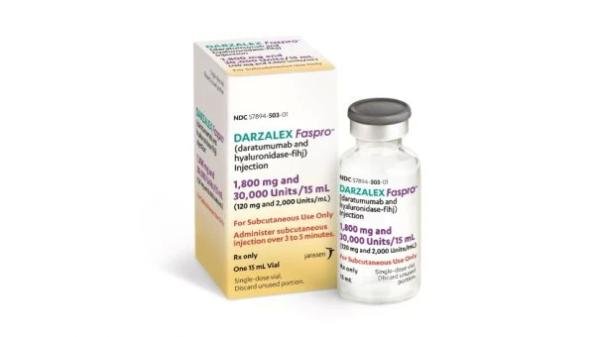Daratumumab/hyaluronidase Disease Interactions
There are 2 disease interactions with daratumumab / hyaluronidase.
Daratumumab (applies to daratumumab/hyaluronidase) cytopenias
Moderate Potential Hazard, Moderate plausibility. Applicable conditions: Neutropenia, Thrombocytopenia
The use of daratumumab may increase neutropenia and thrombocytopenia induced by background therapy. It is recommended to monitor complete blood cell counts periodically during treatment according to manufacturer's prescribing information for background therapies. Dose delay may be required to allow recovery of neutrophils and platelets and supportive care should be considered.
References
- (2015) "Product Information. Darzalex (daratumumab)." Janssen Biotech, Inc.
Daratumumab (applies to daratumumab/hyaluronidase) infusion reactions
Moderate Potential Hazard, Moderate plausibility. Applicable conditions: Chronic Obstructive Pulmonary Disease
The use of daratumumab can cause severe infusion reactions, including bronchospasm, hypoxia, dyspnea, hypertension, laryngeal edema and pulmonary edema. Caution should be taken in patients with a history of chronic obstructive pulmonary disease as they may require additional post-infusion medications to manage respiratory complications as appropriate.
References
- (2015) "Product Information. Darzalex (daratumumab)." Janssen Biotech, Inc.
Daratumumab/hyaluronidase drug interactions
There are 233 drug interactions with daratumumab / hyaluronidase.
More about daratumumab / hyaluronidase
- daratumumab/hyaluronidase consumer information
- Check interactions
- Compare alternatives
- Reviews (1)
- Side effects
- Dosage information
- During pregnancy
- Drug class: CD38 monoclonal antibodies
- En español
Related treatment guides
Drug Interaction Classification
| Highly clinically significant. Avoid combinations; the risk of the interaction outweighs the benefit. | |
| Moderately clinically significant. Usually avoid combinations; use it only under special circumstances. | |
| Minimally clinically significant. Minimize risk; assess risk and consider an alternative drug, take steps to circumvent the interaction risk and/or institute a monitoring plan. | |
| No interaction information available. |
Further information
Always consult your healthcare provider to ensure the information displayed on this page applies to your personal circumstances.


